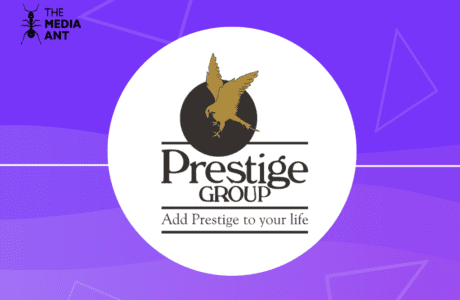Indigo Airlines, a name synonymous with affordable and efficient air travel, has soared high in the Indian aviation market since its inception in 2006. From humble beginnings to becoming the dominant player in the skies, Indigo’s marketing strategy is a testament to the power of consistency, a customer-first approach, and innovative thinking. With a clear focus on punctuality, low-cost fares, and an unwavering commitment to customer satisfaction, Indigo has captured the hearts of millions of travellers. In this blog, we explore Indigo’s year-wise marketing strategies, supported by key marketing concepts like SWOT analysis, 4Ps, and more, to understand how it built one of the most successful brands in the aviation industry.
Indigo Airlines: A Marketing Journey Through the Years
2006: The Takeoff – Low-Cost, High Standards
When Indigo Airlines took to the skies in 2006, the Indian aviation sector was saturated with multiple players offering varying degrees of service. Amid this clutter, Indigo made the bold decision to focus on a no-frills, low-cost model. The brand’s first marketing message was clear: affordable flying without compromising on punctuality.
- Key Strategy: The airline’s USP was clear and simple—low-cost, reliable, and punctual.
- Marketing Tactics: Indigo’s launch campaigns emphasized affordability and no-fuss flying, targeting budget-conscious travelers who prioritized on-time service. The promise of “On-time every time” became their signature slogan.
2010: Fleet Expansion & Reaching New Heights
By 2010, Indigo had firmly established itself in the domestic market. With a fleet of over 25 aircraft and operations to several new cities across India, Indigo’s marketing campaigns began to shift towards emphasizing its size and efficiency.
- Key Strategy: Building trust around reliability and punctuality.
- Marketing Tactics: The airline ramped up its marketing focus on their growing fleet, ensuring travelers knew they were flying with one of the most punctual and reliable airlines in India. They advertised with taglines such as “On-time every time.”
2012: The 100-Aircraft Milestone – “Now Everyone Can Fly”
Indigo reached an important milestone in 2012: 100 aircraft in its fleet. This was a significant achievement for an airline that had just started six years prior.
- Key Strategy: Expanding market appeal through emotional campaigns.
- Marketing Tactics: To celebrate, Indigo launched the “100 Reasons to Fly with Indigo” campaign. It highlighted not just their operational efficiency but also their emotional appeal of making air travel accessible to all. The “Now everyone can fly” messaging resonated with the growing middle-class population.
2015: Flying International – A New Chapter Begins
In 2015, Indigo made a major leap by expanding its operations internationally, opening routes to Dubai, Singapore, and Bangkok. This move marked the beginning of Indigo’s transition from a domestic airline to a global player.
- Key Strategy: Expanding brand presence through international marketing.
- Marketing Tactics: Indigo’s Broadway-style campaign created excitement around their international debut, promising the same punctuality and affordability they offered in India. Their focus was on integrating international routes into the promise of low-cost, reliable travel.
2016: The A320neo – Smart Flying, Lower Costs
In 2016, Indigo became one of the first airlines in the world to operate the Airbus A320neo, a fuel-efficient aircraft that reduced operational costs and allowed for even lower fares.
- Key Strategy: Technological innovation to maintain low costs.
- Marketing Tactics: The airline launched the “Fly Smart, Pay Less” campaign, positioning the A320neo as a symbol of both efficiency and sustainability. It communicated that Indigo was not only affordable but also embracing modern technology to enhance the travel experience.
2018: Indigo Becomes the Market Leader
By 2018, Indigo had captured more than 50% of the Indian domestic airline market, solidifying its position as the largest airline in the country.
- Key Strategy: Reinforcing leadership in the market.
- Marketing Tactics: Indigo’s marketing campaigns during this period celebrated their dominance in the market, emphasizing their affordability and reliability. Partnering with financial institutions like ICICI Bank, Indigo offered cashbacks and discounts, making their services even more affordable.
2020: Pandemic Pivot – Safety Takes Center Stage
With the COVID-19 pandemic grounding most of the world’s flights in 2020, Indigo quickly adapted its marketing to focus on safety and hygiene, reassuring customers that flying with them remained a safe experience.
- Key Strategy: Adaptation to new customer needs in crisis.
- Marketing Tactics: Indigo launched the “6E Care” initiative, which focused on safety measures, hygiene practices, and contactless travel. Through digital campaigns and updates to their mobile app, they communicated the importance of flying with safety and comfort during the pandemic.
2022: The Return of Travel – #LetsIndiGo!
As the pandemic began to subside, air travel returned to the forefront in 2022, and Indigo launched its #LetsIndiGo campaign.
- Key Strategy: Reigniting passion for travel.
- Marketing Tactics: With the tagline “Let’s IndiGo,” the airline encouraged passengers to rediscover their love for flying, promoting flexibility, safety, and affordability. The campaign tapped into people’s post-pandemic excitement about traveling again.
2023: Expanding Horizons – More Destinations, More Choices
In 2023, Indigo continued to expand, adding new international routes to Europe and the Middle East. Their marketing strategy emphasized their growing global reach while retaining their value proposition of affordable, hassle-free travel.
- Key Strategy: Focus on expansion and destination variety.
- Marketing Tactics: “Widen Your World with Indigo” was the key campaign slogan, encouraging travelers to explore new destinations at affordable prices. The emphasis was on affordability paired with an ever-expanding network of routes.
Indigo Airlines: Key Marketing Concepts and Analysis
SWOT Analysis of Indigo Airlines
- Strengths:
- Market leader in India with a 50% market share.
- High brand recall for reliability and punctuality.
- Low-cost, high-efficiency model.
- Weaknesses:
- Limited premium offerings, catering to budget-conscious travelers.
- High dependency on the Indian market for revenue.
- Opportunities:
- Expanding into more international markets, especially Europe and the Middle East.
- Increasing demand for affordable air travel in rural India.
- Threats:
- Intense competition from both full-service and low-cost airlines.
- Rising fuel prices and operational costs.
4Ps of Indigo Airlines’ Marketing Strategy
- Product:
- Low-cost airline with a focus on punctuality, safety, and simplicity.
- Offers both domestic and international routes with a fleet of efficient aircraft.
- Price:
- Competitive pricing, targeting budget-conscious travelers.
- Offers frequent discounts and partnerships (e.g., with ICICI Bank for cashback).
- Place:
- Extensive domestic network and expanding international routes.
- Strong online presence with mobile apps and website for easy bookings.
- Promotion:
- Emotional, customer-first campaigns like “Now Everyone Can Fly” and “Fly Smart, Pay Less.”
- Strategic partnerships and loyalty programs to drive sales.
Conclusion: Indigo Airlines
Indigo’s success story is a testament to how a well-executed marketing strategy, driven by customer needs, operational efficiency, and consistent brand messaging, can turn a small airline into a market leader. Their journey through low-cost efficiency, emotional branding, and adaptive marketing strategies has helped them maintain their position as India’s top airline. By sticking to the core principles of punctuality, affordability, and customer-first service, Indigo has not only redefined the Indian aviation landscape but has also set a global benchmark for low-cost carriers worldwide.





